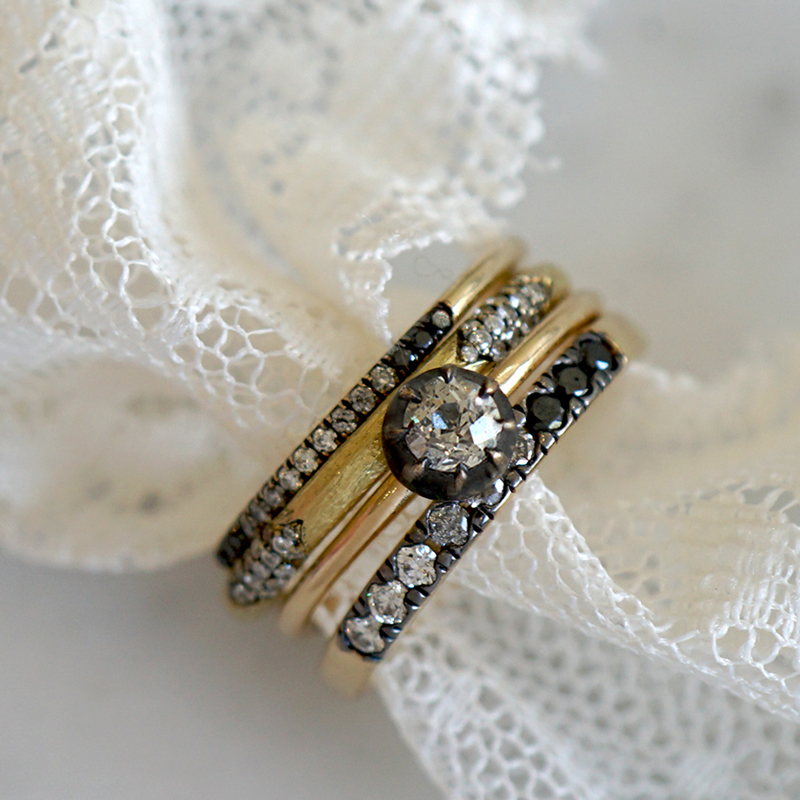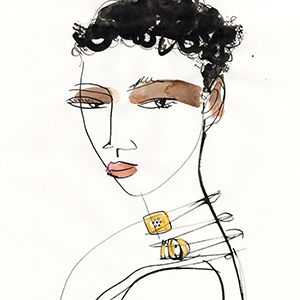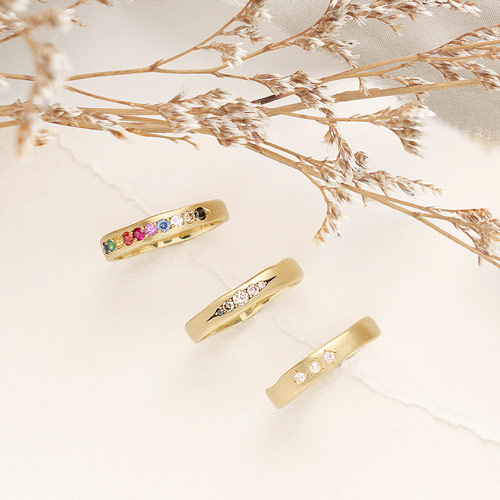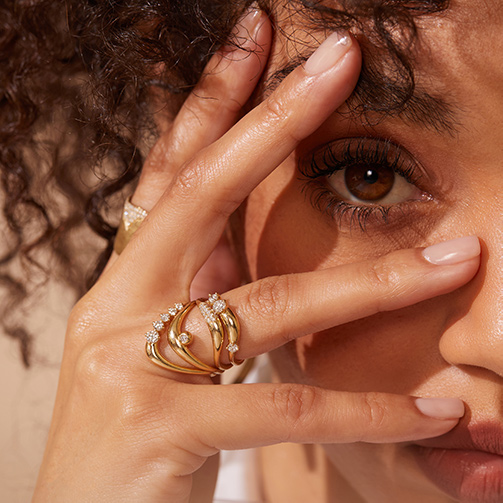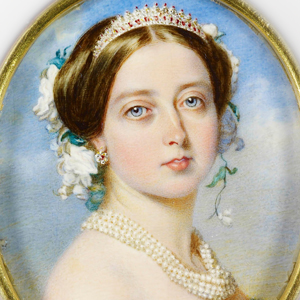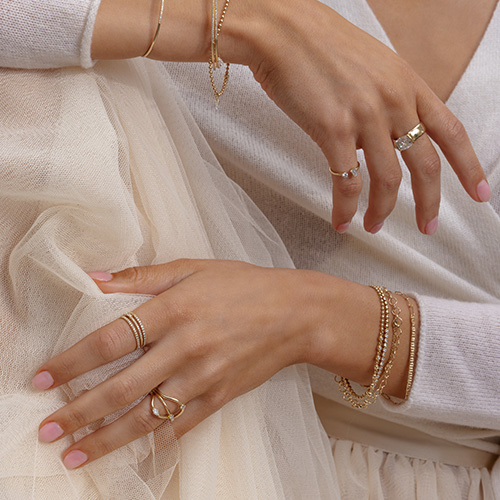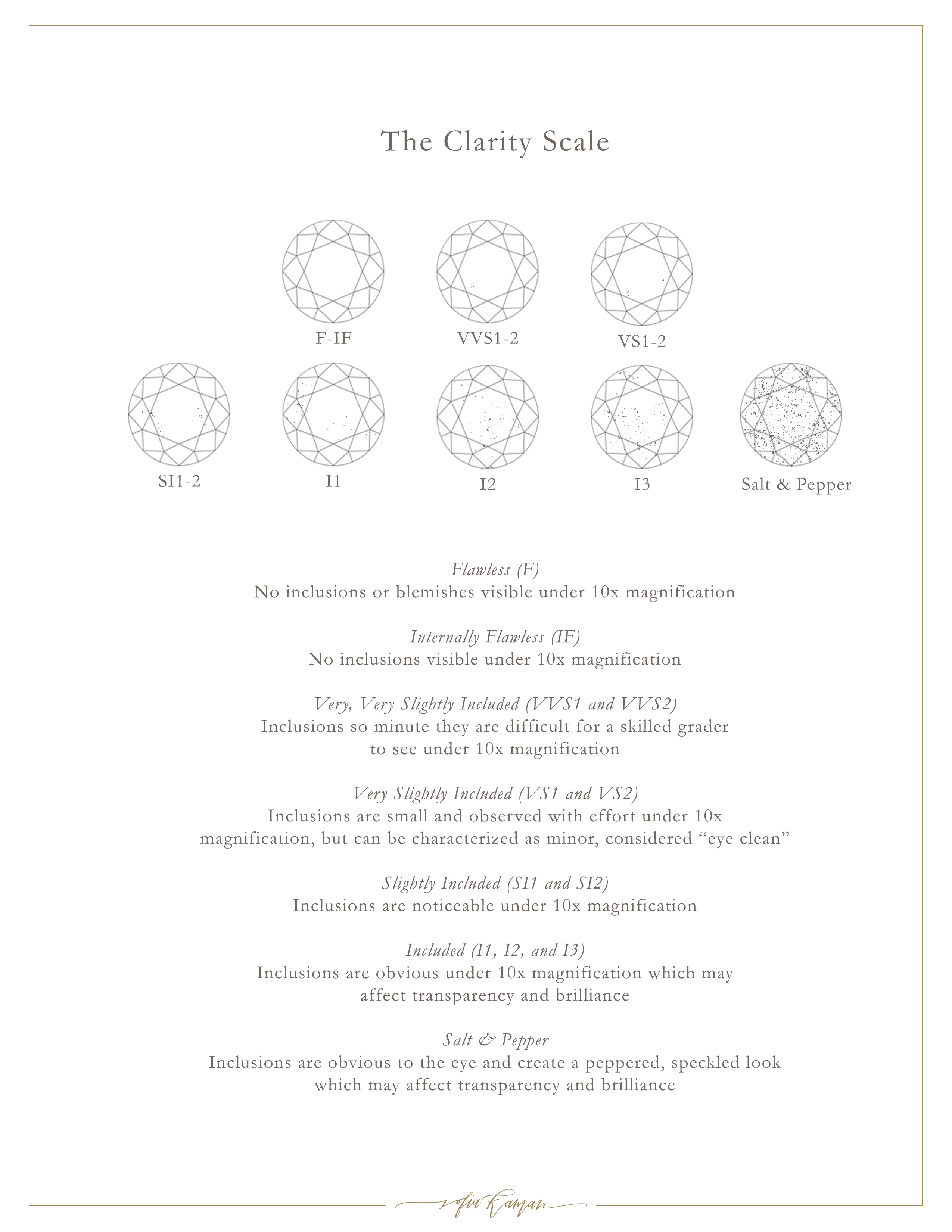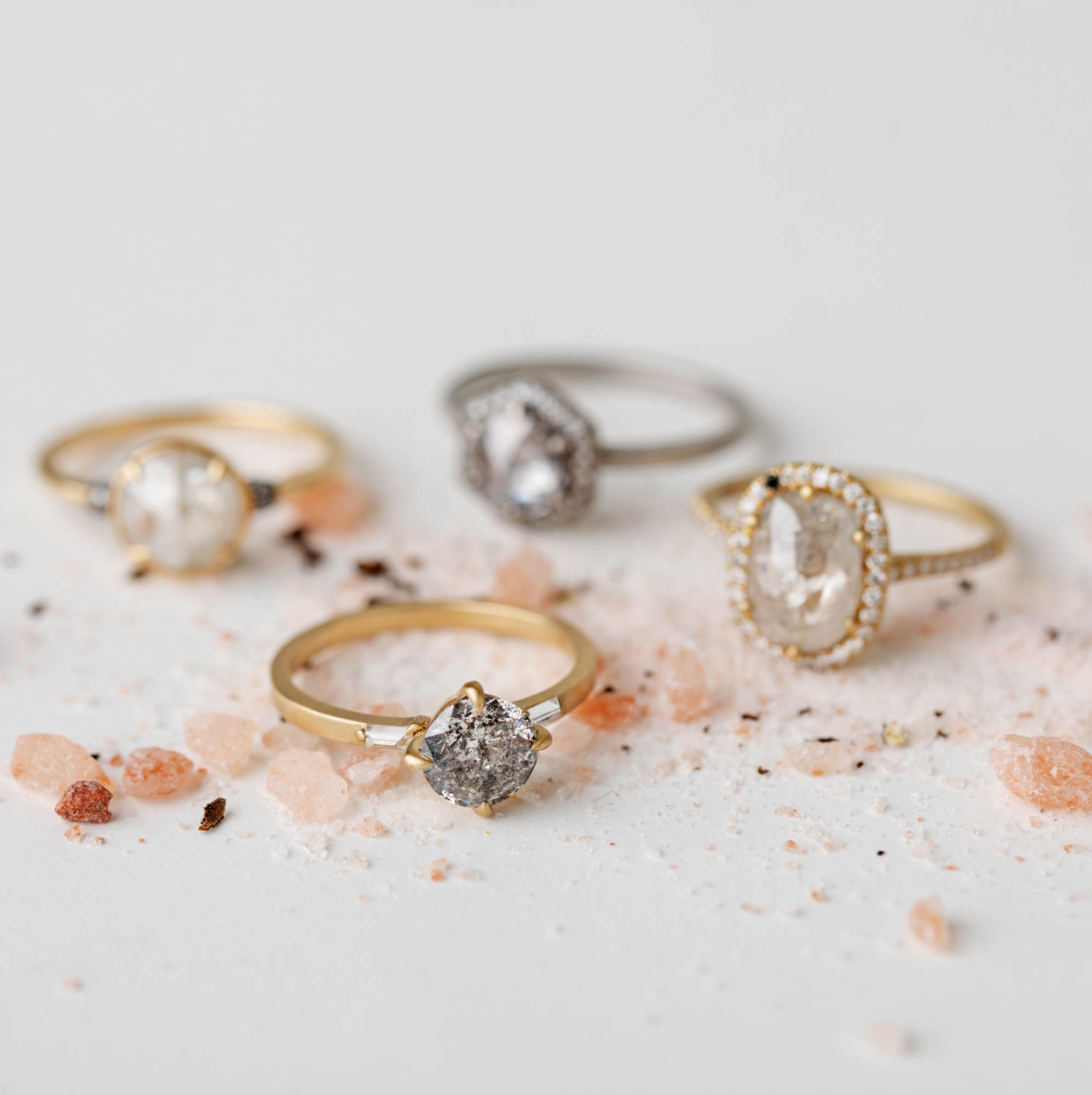
We get it, diamonds are hard. Ring shopping can be daunting and overwhelming at first, what with all the terminology, numbers and tricky names. The 4Cs of diamonds are generally never taught or discussed openly, to men or women. We’re just supposed to hit a certain age and magically understand diamond speak! Picking out a diamond engagement ring is typically something that only happens once every blue moon. This means the process should be fun, exciting and educational! Fear not, the Sofia Kaman team is here to help you understand the 4Cs of diamonds: Color, Clarity, Cut and Carat.

Color
First up, Color. When we talk about the 4Cs of diamonds and color, we are referring to the amount of saturated color in a stone. The normal range of the color scale starts at D and goes all the way to Z. Beyond Z we have the realm of Fancy colors. Diamonds naturally come in every color, but we most commonly see diamonds in normal range which exhibit some touch of color falling within Yellow, Brown or Grey ranges. The scale starts with stones graded D-F, which we consider Colorless. G-J is considered Nearly Colorless, K-M Faint color, N-R Very Light color, and S-Z is considered to have Light Color. Here at Sofia Kaman, we are completely open to all diamond shades! We find the warm, buttery hues of diamonds not only entrancing, but a little easier on the budget as well.
Pro-tip: Color is graded from the side of the stone, so from the side it might appear more saturated with color, but “face-up” whiter when viewed from the top. (This means you can get away with a lower color grade but still have the appearance of a whiter stone.) The color (or lack thereof) of diamonds can directly affect budget, so this is a great place to play around with different shades to see if you can spot the difference! Our personal fave diamond shades are Champagne (technically faint a Brown or Yellow diamond), Grey and Black!
Clarity
The diamond making process is a complex one. As carbon is heated and pressurized, natural organic material can get caught up in the process creating markings visible to the eye called inclusions. In the 4Cs of diamonds, the clarity scale is based off of the visibility of inclusions, and blemishes (which lie on the surface of a stone) under 10x magnification. The scale begins at Flawless (FL), then Internally Flawless (IF), Very, Very Slightly Included (VVS1, VVS2), Slightly Included (SI1, SI2), and Included (I1, I2, I3.) In general, the fewer inclusions a diamond has, the higher the value. Here you can also play with the scale. Looking at stones and the placement of inclusions is very important. A stone may have been graded as an SI2 stone, but depending on the placement of the marking, the inclusions may not be very visible or could be covered with a strategic prong setting.
Again, here are Sofia Kaman we embrace the underdog and love the unique look of a Salt and Pepper diamond (a stone that has many visible inclusions giving it a peppery, speckled look.) No two stones are alike, and we adore their galactic, mesmerizing appearance. Shop our Salt and Pepper Diamonds!
Cut
Diamonds come in so many various shapes and sizes (round, oval, marquise, pear, cushion) but how well they are cut is imperative to their sparkle, scintillation and fire. The Cut grade ranges from Excellent, Very Good, Good, Fair, to Poor. Earlier stones like Old Mine Cuts and Old Europeans weren’t being cut to spec like diamonds are today, so their shapes can be unusual and considered inferior by today’s standards–however they are so special to us for their rich history and unique facets. If you love the look and shine of a diamond but it doesn’t have an Excellent cut grading, don’t fret. Stick to your instincts and know that if you love it, that is all that matters!
Carat
Diamond carat is the measurement of how much a diamond weighs. The carat is divided into 100 points for precise measurements or 1.00ct. Again, since older stones like Old Mine Cuts and Old Europeans weren’t being cut to spec like diamonds are today, you can sometimes find them in varying sizes like the 0.80-0.90ct range. This is a great sweet spot to be in because appearance wise you get the look of a 1.00ct size stone, but the price is generally less when it is right under a 1.00ct or 2.00ct mark. If carat size is most important to you, then you’ll most likely want to play with color and clarity to create the perfect stone in your budget.
There you have it! This is the basic breakdown of the 4Cs of diamonds. Pro-tip: To ease your search, establish an overall budget then prioritize which category is the most important to you, (color, clarity, cut or carat) and go from there. For more inquiries or questions, please chat, email or call us, we’d love to help you create your dream engagement ring!
